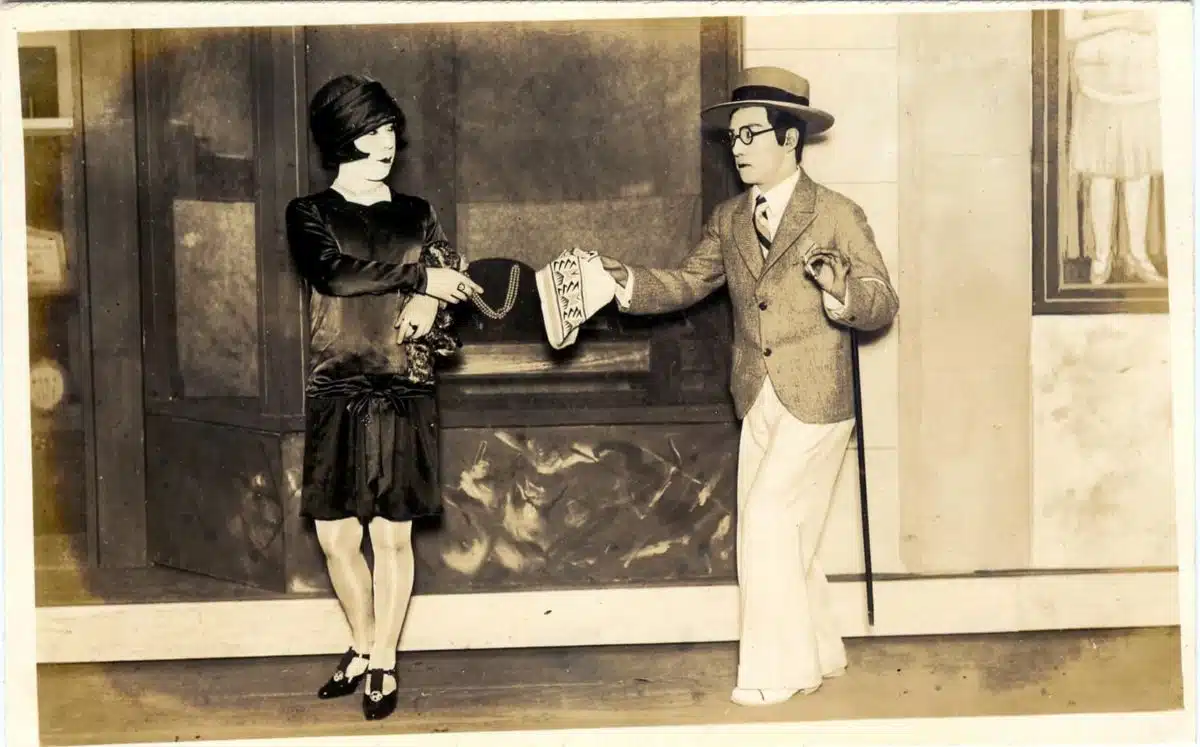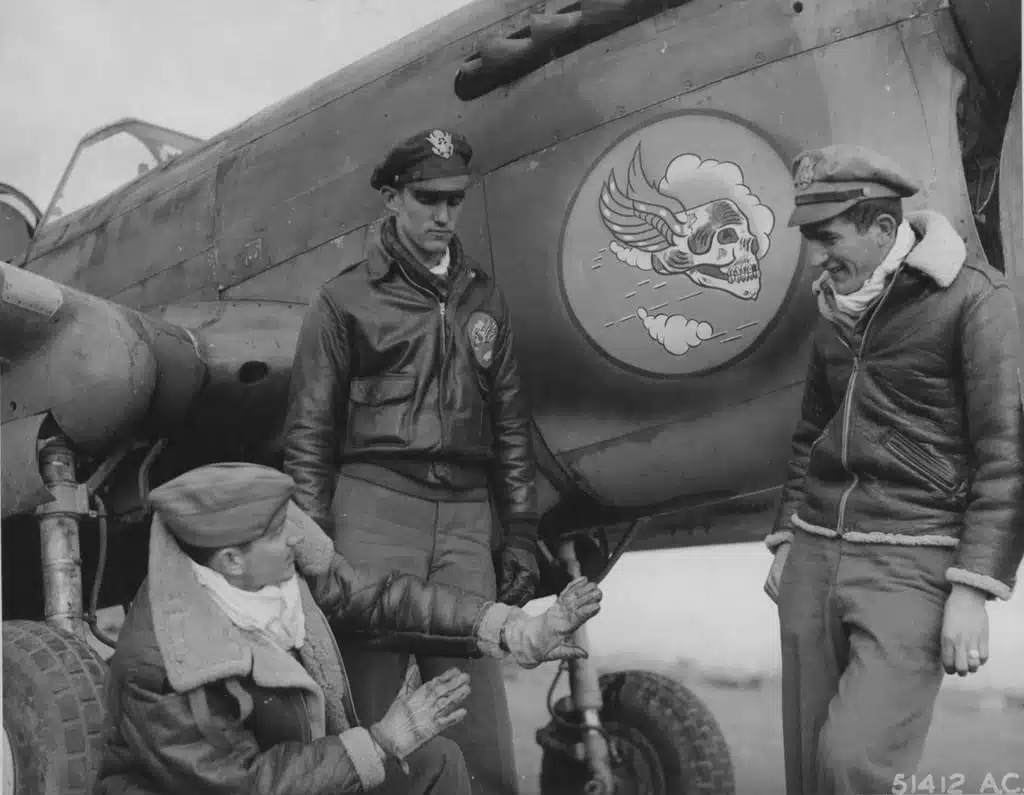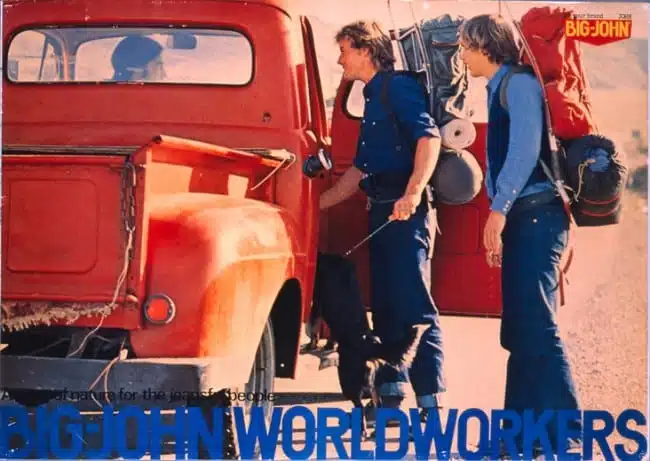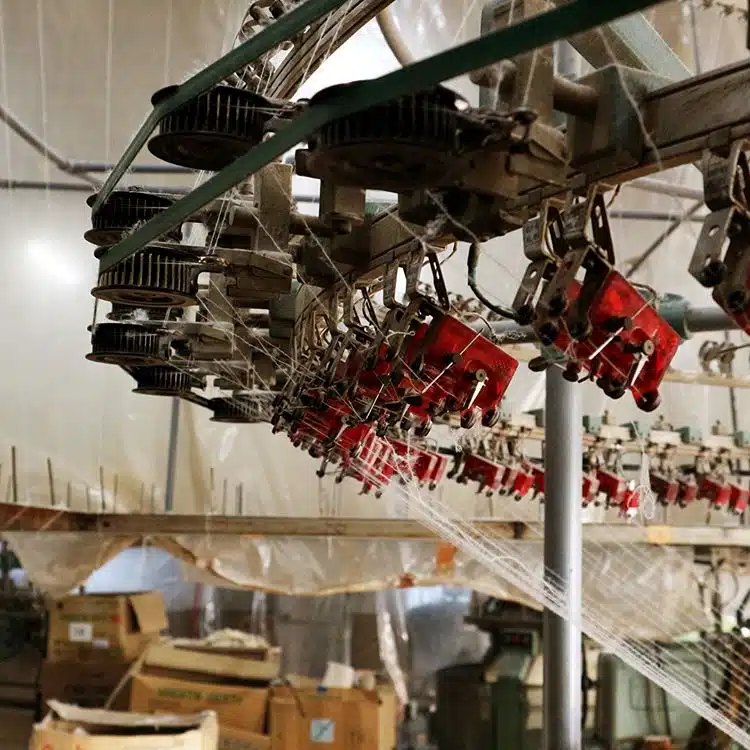In the next in our series of in-depth articles relating our products and brands, we’re going to get into detail about why Japanese Americana and the ‘made in Japan’ label has become such a recognisable mark of quality in heritage clothing.
These days Japanese brands are synonymous with the production of period-correct reproductions of vintage military and workwear pieces, going to painstaking effort to exactly recreate original details and use the manufacturing processes employed in the making of the originals. There are also plenty of Japanese brands taking heritage influences and combining them with modern, custom-made fabrics and unsurpassed levels of quality to create new takes on classic styles.
The history of western influence in Japanese fashion goes right back towards the mid-19th century. The relationship between the Japanese people and western clothing was, at many times during the last one hundred years, dictated by their nation’s relationship with the west, predominantly the USA. This becomes particularly important in the years following World War II when American occupation came to an end and a return to peaceful times started Japan’s journey towards the country it is today.
We’ll look at the earliest western influences on Japanese fashion, then the post-war years and the Ivy League and military-influenced styles that came in the following decades. The story will include the history behind some of the key brands who influenced these styles and continue to contribute to the esteem in which Japanese Americana is held today.
The First Western Influences on Japanese Style
Maybe surprisingly, the first western influences on Japanese style didn’t happen in the 20th century in the years after World War 2. It can be traces back almost one hundred years earlier, as Japan was coming out of near enough three centuries of economic, social and political isolation with the rest of the world.
In 1865 this isolation came to an end, sending Japan into a cultural turmoil. The emperor at the time, Meiji, initiated a reform that began the process of adopting western culture and lifestyle which, of course included fashion.

As is much the same today, the initial novelty of the new imported goods became a sign of status as wealthy Japanese swapped the traditional clothing that had been worn for hundreds of years for more contemporary westernised pieces. As time went on in this process of restoration, the Japanese government pushed hard for its adoption on mass, leading to a radical transformation in Japanese society.
Modern Boys and Modern Girls
During the Taisho period, between 1912 and 1926, the opening up of Japanese politics and society lead to huge cultural changes and a new wave of modernity. Newfound prosperity created a working class who had disposable income and increasingly chose to live in the cities, where they came into contact with influences from the west. This lead to the creation of the mobo (modern boys) and moga (modern girls) subcultures. These notorious movements, as well as other contemporary influences, are beautifully described in an article that goes into a lot more depth on this part of the history of western fashion in Japan:
Some of the most bad-ass, revolutionary kids in Japan’s history, the mobos and mogas liberated Japanese culture with Western fashions by swiping style leadership from the upper classes, and taking it in unauthorized and unconventional directions.
Ametora: An unofficial guide to the history of Japanese Americana
Put simply, mobo and moga referred to “it” boys and girls whose style was influenced by western fashion and who had financial and emotional independence. They were most commonly seen in Ginza, a glamorous district of Tokyo which today is still known for its upmarket shopping and entertainment scenes.
The clothes worn were considered casual, everyday wear in the USA but in Japan they were seen as revolutionary and because of this, the movement was a short lived one. Japanese police undertook a campaign to crack down on the perceived delinquency of the mobo and moga movements and remove what was seen as a rebellious group from the streets of Ginza.

Critics of the movement thought modern boy and modern girl culture to be unnatural and un-Japanese, as well a symbol of Westernisation. Modern girls, in particular, were frequently charged with not being properly Japanese, when compared to, as this article in The Japan Times put it, the “idealised, kimono-wearing, subservient housewife who stood for all that was proper in family life”.
A military coup in the early 1930s brought with it extreme nationalism and the Great Depression. This facilitated a return to traditional values in Japan and set the country on a course towards war, first with China and then with the allied powers in the Second World War.
The Post-War Years and American Occupation
During World War 2, western culture and fashion were, unsurprisingly, completely absent from Japanese life as extreme nationalism continued up until the end of the war in 1945.
A beaten Japan, economically crippled and culturally decimated, was then occupied by thousands of American troops until 1952. The US stayed with an aim of economic renewal and the eventual transition to democratic rule. During the same period, between 1950-53, the Korean War, in which America had significant involvement, took place and Japan was used as a base for US Air Force and Naval operations. This led to an even greater western presence on Japanese soil throughout the early part of the decade.

The result of this soft power that the US exercised in Japan was an increasing western influence on Japanese life and culture. The occupation was, in general, not seen as oppressive and, in many cases, the US troops received a friendly welcome from the Japanese people.
Towards the end of the US occupation and as their presence grew smaller, many pieces of surplus clothing and equipment were left behind by the departing American troops. Before long, the Japanese youth began wearing these garments, meaning that new styles and materials were seen commonly for the first time in the country. Aviator jackets, denim trousers, fatigues and chambray shirts could all be found in Japanese youth culture.

Because of the economic hardship suffered by the country in the years after the war, money was scarce for the working class population. This left-behind surplus clothing was also made into new garments and even scraps of material from discarded garments were upcycled into new items.
As American culture took hold in Japan, Hollywood stars such as James Dean and Marlon Brando were appearing in movies wearing some of the most iconic and culturally significant outfits in cinema. For example, up until the post-war years, the t-shirt was seen only as an undershirt and was worn only in military and workwear environments. Until featured prominently in iconic films of the time, with actors such as James Dean (Rebel Without a Cause, 1955) and Marlon Brando (A Streetcar Named Desire, 1950), at which point t-shirts became part of popular culture and casual fashion.
If you’d like to get deeper into the history of the t-shirt, check out our guide to loopwheel t-shirts.
The youth in Japan was just as heavily influenced by these style icons and their clothes as their American counterparts were. Brands such as Levi’s, Lee and Ray Ban became in high demand amongst the style-conscious young Japanese and, as the economy began to recover, more and more people began to have disposable income to spend on them.

By the early 1960s, western culture had been fully adopted by the Japanese, as this quote, taken from a great article on the Long John website, explains:
“The Japanese basically shifted from 1920’s kimonos to Western clothing. The youth of the 60’s are the first to adopt the occupiers’ fashion. In 1963, The Beatles play their first Japanese concert. Then in 1964, Japan hosts the Olympic Games. Those events touched a generation open to Western influence, looking towards the future.”
Tiffany Godoy
Inevitably, after seeing the popularity of American style, Japanese manufacturers wanted in on the action too. The next part of the story is the emergence of the first Japanese Americana brands.
The First Japanese Americana Brands
Many areas of Japan were known for their textile industries, with certain regions specialising in specific manufacturing processes or types of garment. One such area was Kojima in Okayama Prefecture, which from the 1920s onwards was known for producing school uniforms.
After the rise in popularity of jeans amongst the style-conscious Japanese youth in the post-war years, one Kojima manufacturer, Mauro Clothing, decided to start producing their own jeans. These would be the first examples of Japanese jeans, which today are considered the finest jeans available.
With that said, to begin with, the jeans that Mauro was producing couldn’t be said to be 100% Japanese. When producing these first pieces they ran into issues with the traditional Japanese dyeing techniques penetrating the entire fibre, meaning the jeans wouldn’t show the typical fades points of wear or whiskering where the denim stacked.
Since they were trying to produce authentic versions of the American originals that would appeal to the Japanese who were already wearing Lee and Levi’s, this wasn’t good enough. So, for the early years at least, Mauro imported their denim from the USA and did the cutting and sewing in Japan.
It wasn’t until 1967 when Kaihara Mill in Hiroshima invented a new indigo dyeing technique and finally Japan had its first proper denim. By this time Japan could also produce everything else required to make a pair of jeans, so from this point onwards the jeans being made by Mauro’s brands could, at last, be considered truly Japanese.

The article Blue Jean Nation: A Brief History of Japanese Denim, explains the increase in popularity:
The industry exploded – growing sales from seven million pairs in 1969, to 15 million pairs in 1971, to 45 million pairs in 1973. Local labels proliferated, with names like Edwin, Big Stone, Betty Smith, John Bull, and Bison all drawing on imagery of the American West, though they were now totally home-grown.
Japan House
Setting a New Quality Standard in Denim
Throughout the 1970s and 1980s Japanese vintage collectors travelled to America and brought home with them rare and collectable pieces from right across denim’s history throughout the 20th century.
In a time where new products made by brands such as Levi’s, Lee and Wrangler were sacrificing quality and workmanship for profit and mass-production, the Japanese were learning from pieces made in the days where clothing was designed for work and built to last.
Their almost forensic examination of the fabrics, hardware and manufacturing processes used by the big American brands led to the design and quality of Japanese denim products being refined at a rapid rate. From initially setting out to produce faithful replicas of the jeans and jackets that had become popular in youth culture, the Japanese were starting out on their journey towards taking things to the next level.
Japanese Americana & Perfecting Heritage Style
Moving into the 1990s, Japanese brands began to expand the scope of the American-influenced clothing they produced. Influenced by the popular pieces left behind after World War 2, brands such as The Real McCoy’s emerged and quickly became known for their near-perfect reproductions of vintage military jackets.

McCoy’s became known in the 90s for its reproduction of the A-2 leather jacket worn by US Air Force personnel. The detail in these pieces was like nothing seen before and the lengths that McCoy’s would go to exactly replicate materials and hardware was unlike anything available in the west at the time. Still producing the A-2 today, amongst their wider range of military and workwear heritage clothing, each jacket takes over two months to make and only the highest skilled workers are used in the manufacturing process.
The example of The Real McCoy’s is just one of many. Other brands, such as Buzz Rickson’s (named after a Steve McQueen character in the movie The War Lover), emerged and took on the task of perfectly recreating other pieces. Iconic jackets such as the M-65 and the N-1 Deck Jacket and the L-2 jacket have all been produced with this same degree of detail.

These brands deconstruct original pieces and recreate them from the ground up, going as far as to produce completely bespoke fabrics made in the same way as they were over half a century ago. Things are taken a step further with the jackets of specific divisions or squadrons being reproduced with historically accurate decals and patches.
Even the simple t-shirt has been subject to the Japanese quest for perfection. Using vintage knitting machines imported from the USA almost a century ago, brands such as Kanekichi Industries produce loopwheel fabric on vintage machines. Only a few skilled craftspeople have the necessary experience to operate these machines, adding even further to the rarity of genuine loopwheel fabric.

We have an in-depth article about the practice of loopwheel knitting on this website and, if you’d like to own a piece for yourself, the Loopwheel Pocket T-shirts from The Rite Stuff are the best examples around.
These and countless other examples of unsurpassed quality and attention to detail have led to Japanese Americana becoming the epitome of replica perfection.
Using Vintage Influences in New Ways
Whilst respecting the past, many Japanese Americana brands are also looking to the future, refining their manufacturing processes and developing new ones.
In terms of denim, brands such as Iron Heart, The Flat Head and Pure Blue Japan have developed their own completely bespoke types of denim, each with their own characteristics. For example, denim has been developed that produce high contrast fades (see The Flat Head’s Pioneer Denim), are super-heavy (see Iron Heart’s 25oz denim) and that has a unique feel (see Pure Blue Japan’s slubby fabrics).

Brands have developed their own dyeing processes and experimented with differences in warp and weft thread colours, resulting in unique finishes and denim with a previously unseen character.
Loop & Weft (who we’re the first European stockist for) is a Japanese knitwear manufacturer that combines vintage Americana influences and traditional Japanese skills and craftsmanship to create vintage-inspired sweatshirts and knitted goods. The fabrics used are all original and produced specially for Loop & Weft and, working with a carefully selected group of shokunin (artisans) from a range of small factories and workshops across Japan, each piece in the collection is manufactured by skilled craftsmen and women who have dedicated their lives to their art.

Socks, too, are given the same care and attention, with brands such as RoToTo and CHUP using a combination of vintage machines, unique fabrics and new technology to produce the finest, longest-lasting examples available anywhere.
Japanese Americana at Those That Know
If you’d like to know more about the history of Japanese Americana, here are a few articles that were referenced in this one:
- Amertora: An Unofficial Guide to the History of Japanese Americana
- Modern Girls and Modern Boys Outrage
- Tracing Japanese Lifestyle Changes Through Vintage Graphic Design and Products
- Why Have The Japanese Become The Kings Of Americana?
We stock some of the brands mentioned in this article, too, as well as other brands who fit, in their own ways, into the Japanese Americana story:
For more information about these, or any of our brands, you can contact us at [email protected].